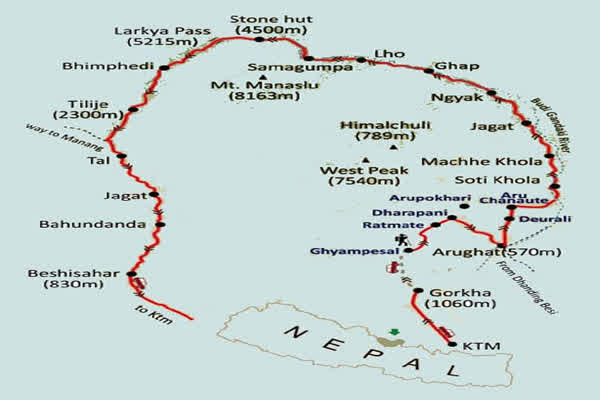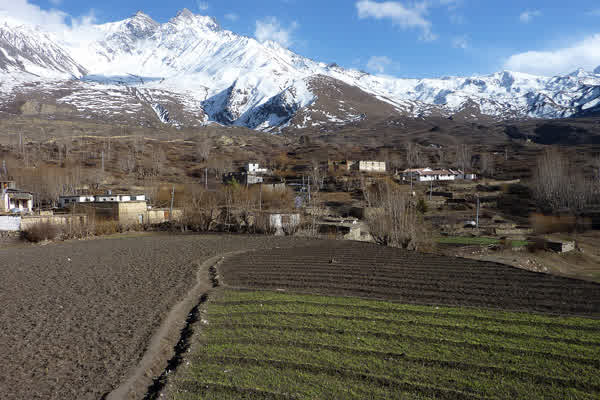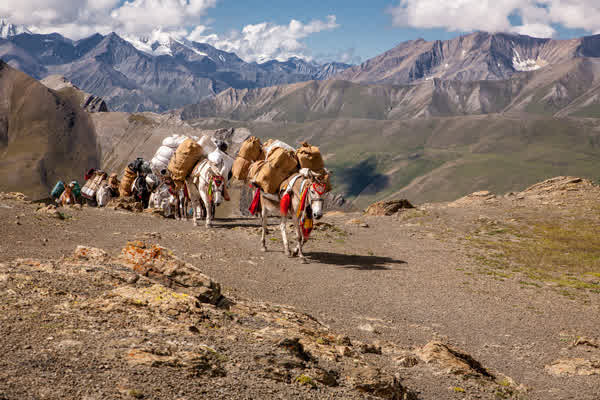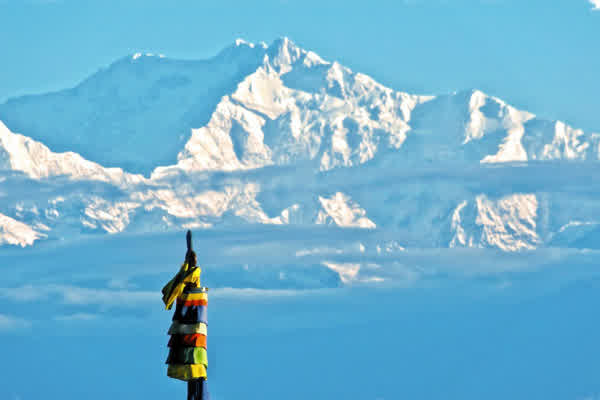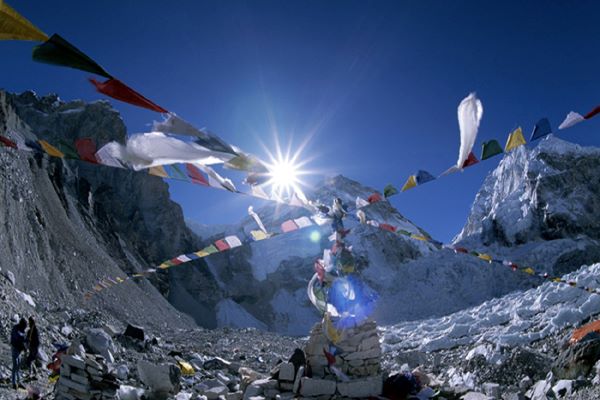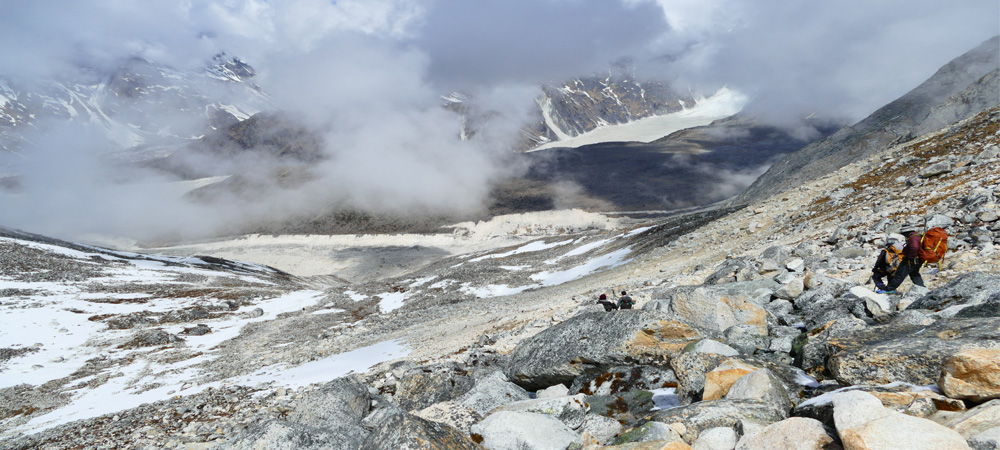
- Overview
- Itinerary
- Price & Dates
- Useful Info
- F.A.Q.
- Gallery
Facts of this Trip
Manaslu Circuit Trek
Manaslu circuit trek was officially opened to tourist in 1991, but mountaineering expedition has had made long access to this area. In 1950, a party led by H.W tilman trekked from thonje tobimtank and col gimmy crossed the Larkey la looking for an interesting mountain to climb. Manaslu (8156 m) was attempted by Japanese expeditions every year from 1952 until 1956 when the first ascent was made. Having become known as Japanese mountain much of the information about the area was available in Japanese. The Japanese continued to dominate the climbing scene of Manaslu until 1971. A few trekkers including peripatetic Hugh Swift, Managed to obtain the trekking permit for the region but otherwise this trek always has been the domain of the mountaineering expedition, manaslu circuit trek is geographically spectacular and culturally fascinating circumnavigating Manaslu peak 29 (7871m) Himal Chuli (7893m) and Boudha (6672m). Much of this trek is in a region of strong Tibetan influence. We cross the Larkya- La (5213m) and descend to the Marshyangdi River and further trek down to Besishahar from where we will drive back to Kathmandu.
Trip Itinerary
Arrival at Kathmandu arrival
At your arrival at a Tribhawn international airport, Kathmandu our representative from Alfresco Adventure Travel wait for you outside at Arrival gate with your Name card. Our team will welcome and collect your baggage at the airport. By formal introduction with the representative and transferred to your hotel. In the evening you will enjoy complimentary welcome dinner in a typical Nepali restaurant with Nepalese cuisine. Overnight at hotel.
Sightseeing around Kathmandu Valley an Pre trek preparation
After early morning breakfast, we have sightseeing tour around Kathmandu Valley. Kathmandu valley is well known as living museum, art and cultural hub of the ancient historical city. We visit Swayambhunath Stupa. Swayambhunath stupa is popularly known as monkey temple, which is isolated on a hilltop in Kathmandu and is also one of the famous historical and religious site for both Hindus and Buddhist community. It provides excellent views of the Kathmandu valley. Then we drive to Boudhanath stupa, which is one of the largest stupas in the world and one of the important religious site for Buddhist around the world. Finally, we drive at Pashupatinath Temple is the biggest temple of lord Shiva in south Asia. It is a close distance from Boudhanath Stupa and located at the bank of holy Bagmati River. Pashupatinath Temple is the ultimate pilgrim site for Hindus throughout the world. All those three sites were listed in UNESCO World Heritage sites. Overnight at hotel.
Drive Kathmandu to Soti Khola. (700m)
After breakfast, we drive from the hotel to Soti Khola on our private vehicle, which takes around 7-8 hours. Overnight at Soti Khola.
Trek Soti Khola to Machha Khola. (869m)
After breakfast, we will start our trekking from Soti Khola to Machha Khola, which takes around 5-6 hours of Gentle walk alongside the famous Budi Gandaki River. The main inhabitants of Machha khola village are the Gurung communities with their own tradition, culture and they have good hospitality. Overnight at Machha Khola Village.
Trek Machha Khola to Jagat (1340m)
After breakfast, we Trek Machha khola to Jagat, which will take around 6-7 hours of the gentle walk along with few upward downward walks then crossing the Tharo khola, we reach at Khorlabesi. After walking for a few hours then we will reach the natural hot spring (Tato pani in Nepali). After spending some time at Hotspring we continue our journey again until we finally reach to Jagat after a long trek. Overnight at Jagat.
Trek Jagat to Deng (1804m)
Enjoy your morning hot breakfast, then we trek towards Deng. The trail to Deng from Jagat is quite interesting; the trail consists of gentle walk through the bank of Budi Gandaki River, and equal level of easy ascends. It takes around 7-8 hours of gentle trek to reach Deng.
Trek Deng to Namrung (2630m)
After the breakfast, we trek from Deng to Namrung this will take around 7-8 hours of trek. On our trek we will enter the area influenced by Buddhism where we can see colorful flags and few stone huts. After a few more ups and downs through forests, the trail turns a corner and arrives at Ghap through well-preserved paintings and elegant mani wall. After crossing the Ghap village, the valley becomes steeper and there is a long climb through bamboo and rhododendron forest to the village of Namrung. Stay overnight at Namrung village.
Trek Namrung to Lho Village. (3180m)
After breakfast we trek from Namrung to Deng village, this will take around 4-5 hours of trek. After a few hours of the wonderful trek, we arrive at the Lamagaon, from where Mount Himal chuli can be viewed. After crossing the Himal chuli view point on the way to Lho village we can see the Tong Gompa a Buddhist shrine. Since the is the shortest trek for just 4-5 hours we will reach at lho village earlier, hence the remaining time can be used to explore Lho village. Stay overnight at Lho Village.
Trek Lho village to Samagaon (3520m)
After breakfast we trek from Lho village to Samagaon, this will take around 5-6 hours of trek. From Lho, we follow the right bank of the river with views of Peak 29 ahead. A couple of hours climbing through the forest bring us to the village of Shyala, offering superb views of Phungi, Manaslu and Him Chuli. After enjoying the spectacular views of mountains and peaks, we continue our trek for more about 2 hours then we will arrive at the Samagaon. From Samagaon we can see the stunning view of Mount Manaslu (8163 m), eight highest mountain in the world. Stay overnight at Samagaon.
Acclimatization at Samagaon.
This day we will spend our day at Samagaon for Acclimatization hence after the breakfast we will hike up to the Birendra Lake which lies around 1-hour hike from Samagaon. Birendra Lake is a freshwater lake located in the Manaslu glacier and nearby punhyen glacier. After spending few times around the Birendra Lake we will hike down to the nearby monastery to explore around. After exploring the monastery, rest time on your own, where you can take a walk around the village. Overnight at Samagaon.
Trek Samagaon village to Samdo (3875m)
After the breakfast, trek Samagaon to Samdo, this will take around 4-5 hours. During the Samagaon to Samdo route, we can view the beautiful mountain views, amazing lanscpaes close to the Tibetan border. During the trek, we can also see the beautifully painted mani walls, on the way to the Samdo village. After continues trek of 4-5 hours, we will arrive at samdo village. Stay overnight at Samdo village.
Trek Samdo to Dharmasala (4460m)
After the breakfast, trek Samdo to Dharmasala, this will also take around 4-5 hours. People also refer to Dharmasala as Larkya Phedi, which is the same in fact. Today we start our trek by crossing the wooden bridge over a river then arrive at the Larke bazaar, which used to be a good market in the previous time but there is nothing remaining at the present time. Crossing the larke bazaar and walking a few more, the huge larkya Glacier coming from Manaslu can be seen from here. The trail grows steeper, climbing up the side of a gorge to a viewpoint at the edge of a huge gorge at 4000m. Nearing the Larkya Glacier, we reach Larkya Phedi, where there is a small lodge, built to serve travelers crossing the Larkya La which lies now just ahead. Stay overnight at tea house Dharmasala.
Dharmasala to Bhimthang (3590m)
Start our trek at the early morning after the hot and quick food, then trek Dharmasala to Bhimthang, this will take around 9-10 hours. After an early start, we soon reach the snowy valley on the left side of the Larkya Glacier with attractive views of Cho Danda and Larkya Peak. We continue trekking along glacier moraine and start making the gradual ascent to the top of the Larkya pass (5160m). From the top, there is a stunning panorama view of Himlung Himal, Cheo Himal, Kang Guru and Annapurna II. On the descent, the trail follows the top of the moraine to the west and makes a set of steep, rough switchbacks as it crosses the moraine then descends more gently on snow to a grassy moraine. Depending on the conditions if icy then crampons and ice axe are advisable for the descent. The trail now becomes easier to follow and reaches a small meadow and spring at. The valley becomes wider as the trails heads down to a large meadow, past a Mani wall and a small rest house that marks Bimthang. Stay overnight at tea house.
Trek Bhimthang to Gho (2515m)
After breakfast, we trek from Bhimthang to Gho, this takes around 6-7 hours. After crossing the pastures of Bimthang the trail drops to a glacier stream at the headwaters of the Dudh Khola crosses a wooden bridge and descends into pine and rhododendron forest. Not far from here you reach Karche's fenced fields, then cross a landslide before making a steep climb to a ridge decorated with prayer flags before making a descent to the river bank at Gho. Stay overnight at Gho.
Trek Gho to Dharapani (1963m)
After breakfast, we trek from Gho to Dharapani, this takes around 4-5 hours, exiting the Manaslu trekking region and entering into the famous Annapurna circuit trekking region. From Gho the trail continues through fields and intermittent stands of rhododendron and oak tree to arrive at Tilje, a large Gurung village. Exit Tilje village through a stone arch, cross the Dudh Khola and follow along its embankment descending through a scrub forest. The walls of the Marsyangdi Valley loom larger and finally the houses of Dharapani appear in the distance. Stay overnight at Dharapani.
Drive Dharapani to Besi Sahar (760m)
After the breakfast at the Dharapani, drive to Besi Sahar, this takes around 4-5 hours of a rough drive on a normal jeep. Arrive at the Besi sahar, Check in to the hotel, rest and fresh up. After lunch walk around the local market in the Besi sahar at your own. Stay overnight at Besi sahar.
Drive BesiSahar to Kathmandu.
After the breakfast drive from Besi Sahar to Kathmandu in a private luxury vehicle, this takes around 5-6 hours. Upon arriving at the Kathmandu, check in to the hotel, rest, do some fresh up then prepare for Typical Nepali farewell dinner. Overnight Kathmandu.
Final Departure
Today is your last day with us in Nepal. You will escort to the airport for your onward destination with the unforgettable moment of your life from the wonderful Manaslu Round Trek. Our office representative came at your hotel for pick up and drop you at the airport.
Price & Dates
Upcoming Fixed Departure Date and Offer Price.
Trip Cost Includes :
- Arrival and Departure by comfortable Private vehicle
- All necessary paperwork, trekking permits (National Park Permit, TIMS)
- 3 star accommodation in Kathmandu on BB plan (with breakfast)
- Teahouse accommodation during the trek (Include breakfast, lunch, Dinner)
- Welcome and Farewell dinner in typical Nepal restaurant with Nepal food
- All land transportation is arrange as pre the itinerary in a comfortable vehicle
- City tour in Kathmandu with expert guide by private vehicle
- All entrance fees and government and local charges for sightseeing/monument visits as per the itinerary
- An experienced English spoken and government certified trekking leader, guide and assistant trek leader or guide
- Poter service (2 trekkers = 1 porter)
- Staff cost including their salary, insurance and allowance
- Medical kit (carried by your trek leader or guide)
Trip Cost Exclude :
- Your Medical and Travel insurance
- Personal Belong items
- Personal expenses, shopping, Beverage bills and so on.
- Tips for staffs
Useful Info
Useful information
Frequently Asked Questions.
Media Gallery
Please click on small photos to have larger view.

